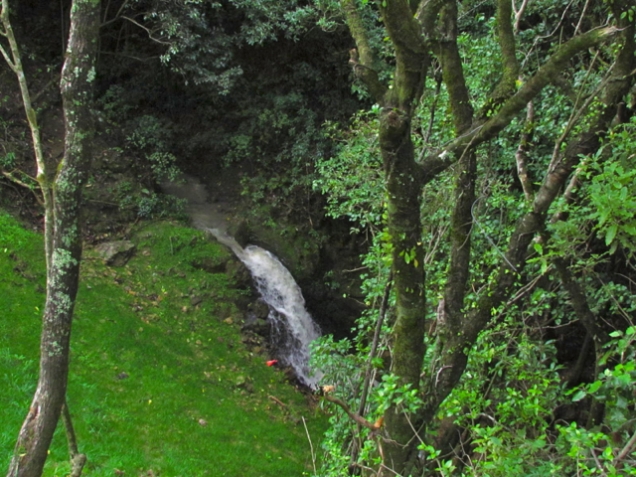On another of these sweltering hot days, what better thing to do than seek respite in the coolness of the forest. (Well, apart from finding a shady spot beside a large body of water, that is.) Caitlyn and I chose to go for a forest wander this afternoon, followed – it has to be said – by a river dip.
We enjoyed looking at the natural mosaics on the forest floor, and while we were examining one, Caitlyn spotted this tail-less skink! On our way back from the walk the skink was still there, so we sat down on a rock nearby and ‘watched his stillness’, as Caitlyn put it. He didn’t seem to mind our company, either.

 As you may have seen from an earlier post
As you may have seen from an earlier post  Do other countries have ‘gullies’? – I am not sure. The dictionary tells me they are also known as ‘small valleys’ and ‘ravines’. ‘Valley’, even of the diminutive kind, seems a bit too bucoIic to me, while ‘ravine’ sounds way too treacherous (though in fairness, some gullies are pretty precipitous).
Do other countries have ‘gullies’? – I am not sure. The dictionary tells me they are also known as ‘small valleys’ and ‘ravines’. ‘Valley’, even of the diminutive kind, seems a bit too bucoIic to me, while ‘ravine’ sounds way too treacherous (though in fairness, some gullies are pretty precipitous). 





